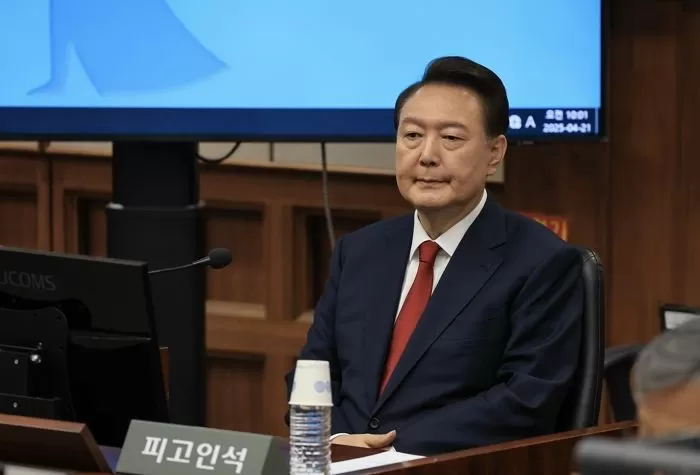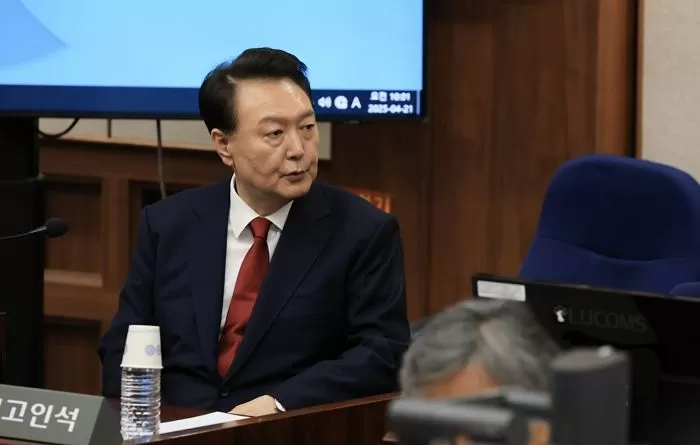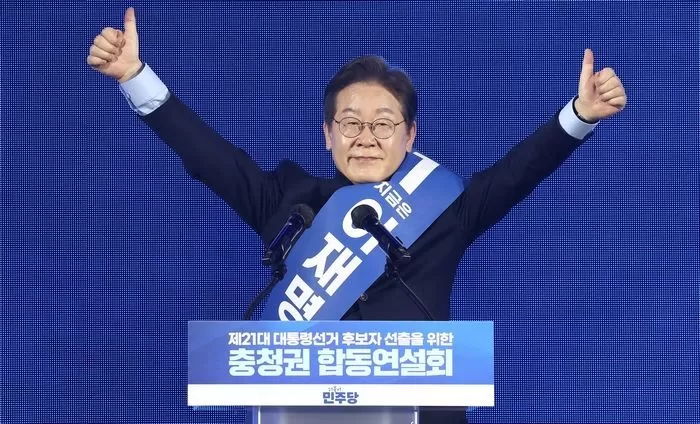Former President Yoon Suk-yeol Attends Second Trial for the Charge of Leading Rebellion
A photo of former President Yoon Suk-yeol sitting in the defendant's seat for the criminal trial on charges of leading a rebellion has been disclosed for the first time.

On the 21st, the 25th Criminal Division of the Seoul Central District Court, presided over by Chief Judge Ji Kwi-yeon, held the second trial date for the charges against former President Yoon starting at 10 a.m.
Former President Yoon entered the Supreme Court room 417 through an internal corridor at 9:56 a.m. As he appeared, all the members of his legal team who were already seated stood up and bowed in greeting.
He was seated in the second row of the defendant's section, on the far right, wearing a dark blue suit with a red tie.
He stared straight ahead without saying much, occasionally glancing at the audience and cameras. When the judges entered the courtroom at 10 a.m., former President Yoon stood up, bowed his head in greeting, and then sat back down.

Courtroom Shooting Authorization and Former President Yoon's Reaction
The court explained, "Considering the public interest and the right to know, we have authorized courtroom shooting prior to the start of the proceedings, similar to previous similar cases."
At 10:01 a.m., it was announced, "To proceed with the scheduled court procedures, we will conclude the filming," and the staff filming were instructed to leave.
At that moment, former President Yoon was seen smiling slightly while looking around the audience, chuckling a little.
After a brief conversation with his attorney, Wi Hyun-seok, he looked toward the camera as the photographers exited. He then glanced around the audience again before staring straight ahead.

During this trial session, the cross-examination of Colonel Cho Seong-hyun, commander of the First Security Battalion of the Capital Defense Command, and Lieutenant Colonel Kim Hyung-ki, commander of the 1st Special Forces Battalion, by former President Yoon's team was scheduled.
Previously, during the first trial on the 14th, the court had denied filming requests from some media outlets due to late submissions, which did not allow confirmation of the defendant's consent.
In response, the legal video reporters submitted their requests again the following day, and on the 17th, the court allowed filming by reporters in the courtroom up until the start of the second trial.
According to Supreme Court rules regarding courtroom attendance and filming, the presiding judge can authorize internal courtroom filming if the defendant consents, and even without the defendant's consent, if it is deemed justified for public interest.
Image source: News1 (Joint Photo Coverage Team)
![[Breaking News] Pope Francis has passed away.](https://wordkorean.com/wp-content/uploads/2025/04/thumbnail-831.webp)

